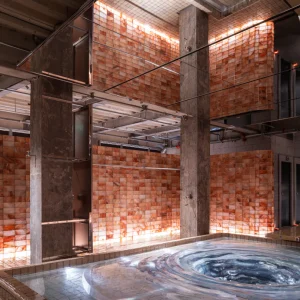The proposed IDR2.3 trillion ($255 million) renovation project is expected to commence in late 2010. Perusahaan Angkasa Pura (PAP), the state-owned airport management company, has detailed the renovation plan, which encompasses expansion of the domestic and international terminals and a complete interior and exterior renovation. The company is forced to take up the renovation plan due to the increasing number of flights.
Under the plan, the new buildings to be constructed will be designed as a blend of contemporary and Balinese traditional architectural elements, as required by provincial bylaw No 5/2005 on building designs. The project is scheduled for completion by 2013.
The international terminal will be expanded to 120,000 square metres and the domestic terminal to 65,000 square metres. The cargo terminal will see an expansion of up to 5,000 square meters. A three-storey, 1,500 vehicle parking lot will be erected on a 39,000 square metre plot. The domestic apron area will be expanded to 314,000 square metres from 214,500 square metres to accommodate larger aircraft, including the Boeing 747 and the Airbus A330.
Security measures including X-Ray scanners, CCTV and body scanners will be installed as part of the renovation plan. The expansion will enable the airport to handle 17 million passengers a year by 2020 and 25 million passengers per year by 2035.
The Ngurah Rai International Airport, also known as Denpasar International Airport, is located in southern Bali, 13km south of Denpasar. It is Indonesia’s third-busiest international airport.
The airport was originally built as a simple 700 metre-long airstrip by the Dutch Colonial administration’s Voor Verkeer en Waterstaats public works office in the 1930s. In 1959, the airstrip was enhanced into an international airport. New facilities were built as part of an IDR35 billion ($13 million) renovation project in l969. Perusahaan Angkasa Pura (PAP) took over the management of the airport in 1980.





